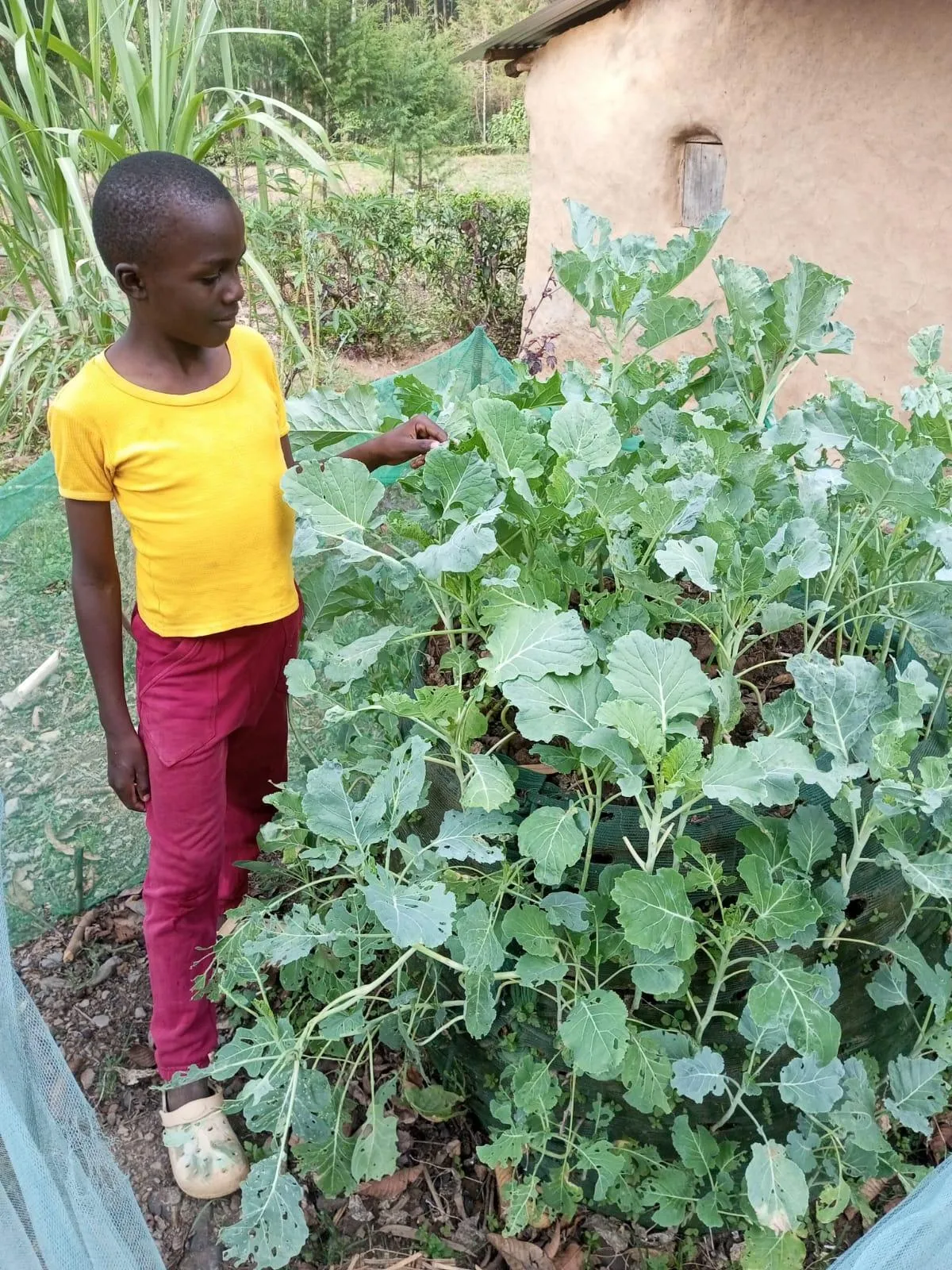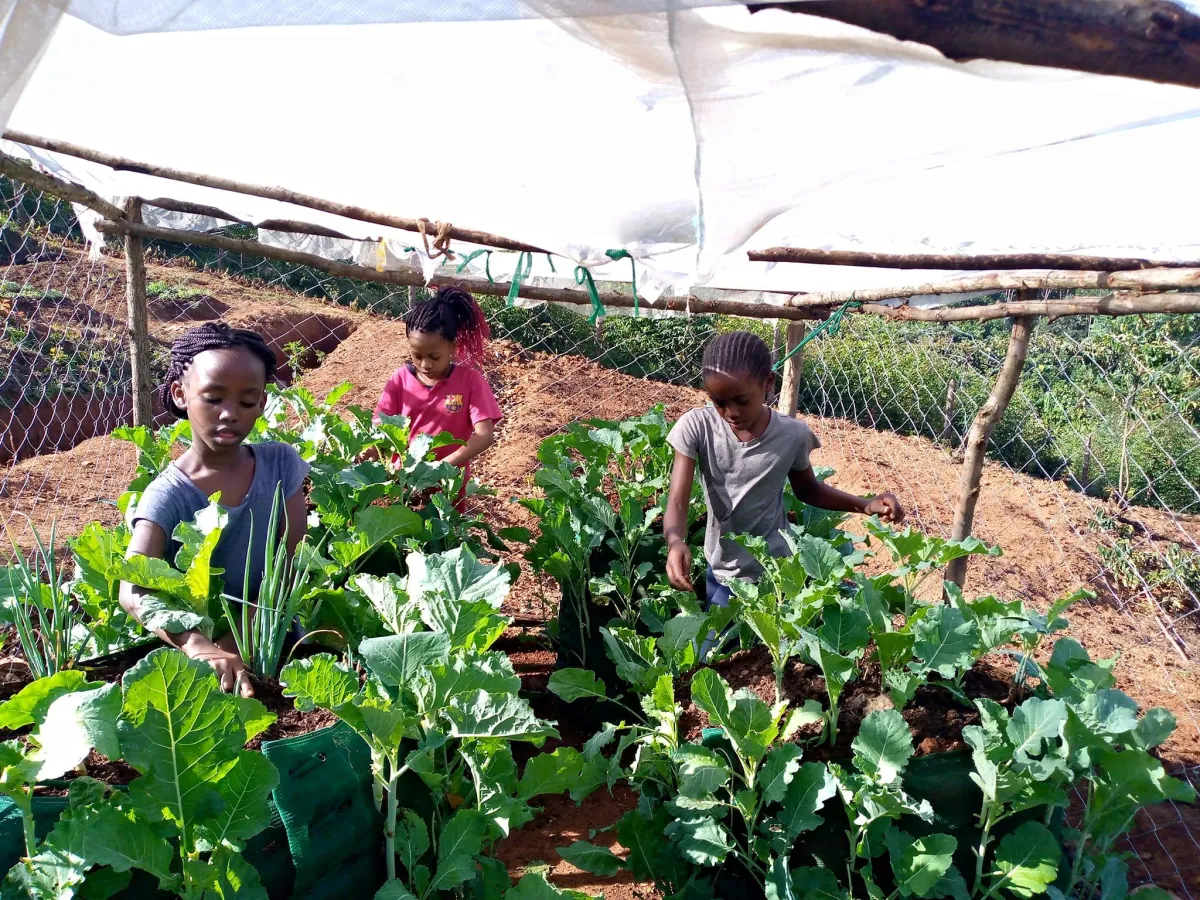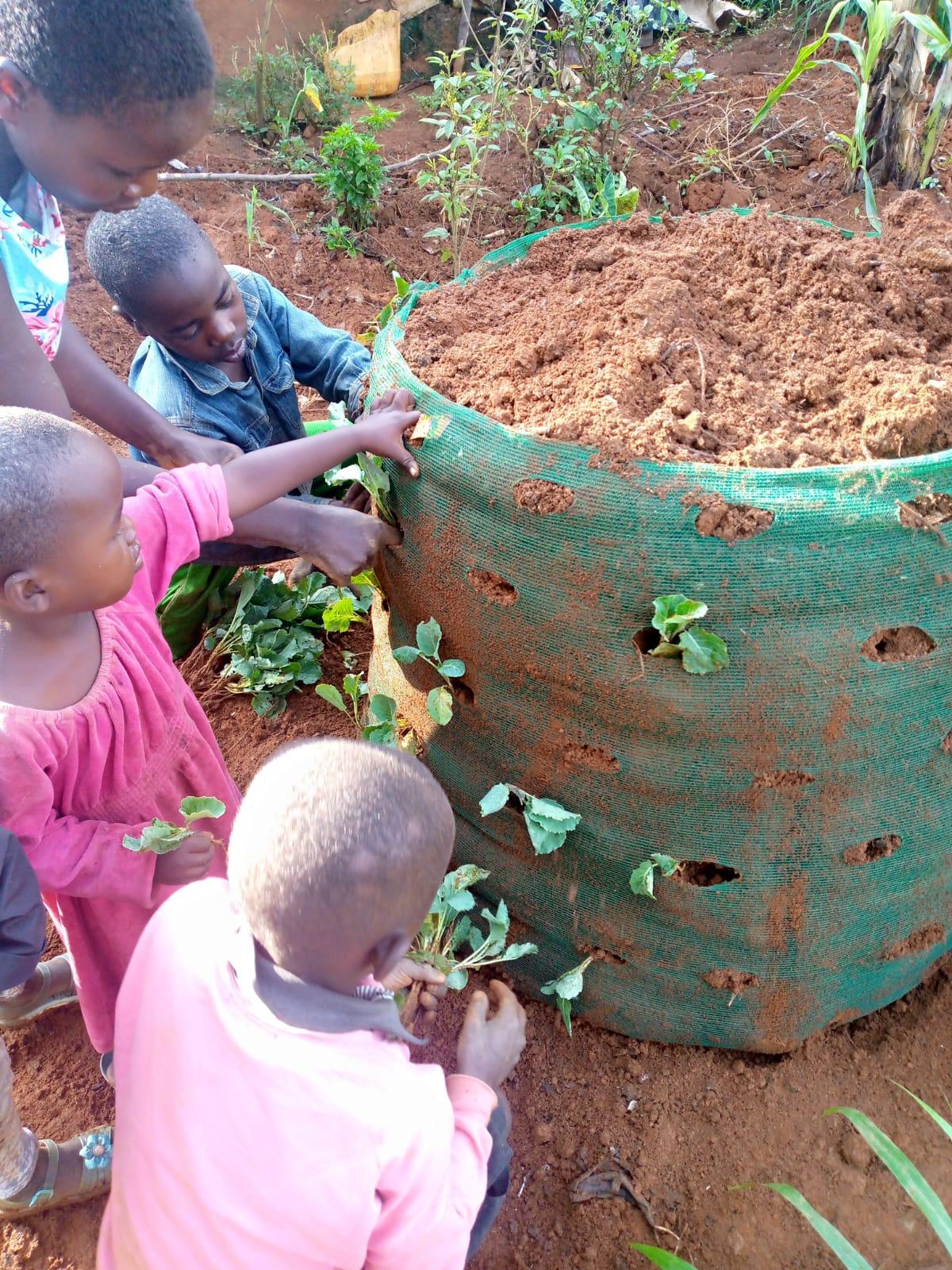
These garden towers are helping Kenyans rise above hunger
This article was originally featured in The Christian Science Monitor on August 1, 2023 by ByMoffin Opilio, Contributor
When drought hit Kenya three years ago, Agripina Mutuka had to slash her family’s diet to just one meal a day. This was the most Ms. Mutuka, a widow who has been working as a farmer for 10 years, could afford after the drought dramatically reduced her earnings from the sale of her agricultural produce. “I used to fill 15 bags of maize each harvest. After the drought, I can barely fill three bags,” says Ms. Mutuka, who provides for her four children and two grandchildren in the agricultural region of Kakamega.
Kenya is going through its worst drought in 40 years, drying up the country’s once lush farmlands and leaving 4.4 million people in need of food assistance, according to official estimates.
.

On top of the damage wrought by the climate emergency, Russia’s invasion of Ukraine has also pushed up prices of staple imports such as oil, wheat, rice, maize, fertilizers, and oilseeds. So when an American nongovernmental organization called 100 Humanitarians invited Ms. Mutuka and others in her village of Lanasawa to a meeting to discuss a possible solution for the dire food situation, she did not think twice.
The NGO introduced Ms. Mutuka and 30 of her neighbors to garden towers, 4-foot-tall durable mesh fabric cylinders, filled with soil and punched with holes a few inches apart into which seedlings are planted to produce a dense vertical garden, capable of growing 120 vegetables and herbs – all in a diameter of just 3 feet.
Ms. Mutuka and her neighbors were trained in planting, maintaining, and selling the vegetables from the garden tower.
“I fully embraced the idea of the garden towers,” she recalls. “Its model provided convenience in terms of land, as only a small portion is used to grow crops.”
The NGO’s local staff followed up with each family, helping them to maximize the growing potential of the garden towers and troubleshoot as necessary.
Two years after first learning about them, Ms. Mutuka now has eight garden towers. She uses two to feed the family, and in the others she grows vegetables to sell.
“The money from the sale of the garden towers’ vegetables is enough to sustain my family,” she says.

Cheap and easy to use
According to World Bank data, the number of Kenyans suffering from severe food insecurity has been increasing since 2015.
The 100 Humanitarians founder and executive director, Heidi Totten, had been piloting garden boxes as a sustainable solution to hunger in Kenya after seeing one of them in the capital of Nairobi.
During her experiments with garden boxes, though, she found that they were beset by termites and weren’t hardy enough to survive the weather. So she replaced the boxes with hard-wearing mesh towers and found them far better adapted to the climate and pests in Kenya. The mesh lasts for 10 years, and the soil needs replacing every four years.
A year after the towers were introduced to Lanasawa, the results were already encouraging: Each tower could feed a family of five to six people one meal of vegetables per day. Families could sell any excess vegetables to supplement their incomes, and some earned extra money from sewing and assembling the mesh cylinders.
Each garden tower costs about $20, including soil and plant seedlings, and each family needs two to grow enough to meet its nutritional needs.
So far, 10,000 garden towers have been distributed for free to families most in need of support. Others with the means to buy them are encouraged to purchase the towers directly from the NGO.

Cheap and easy to use
Marissa Waldrop, a program director with 100 Humanitarians, says a garden tower is not only cheaper than a traditional vegetable plot, but more sustainable, too.
“It is easy to set up, uses less space, and takes about two months for the vegetables to grow to maturity,” she says. “Also, the project uses less water, because water that would otherwise go to waste travels downwards through other plants in the tower. And soil used in the garden towers holds nutrients better than soil lying on the ground.”
Despite the fact that the towers use significantly less water than a conventional garden, water remains a challenge in the current conditions, says Ms. Totten.
“We are researching possible ways of irrigating these garden towers while also saving [water] for other personal use. One way would be to drill boreholes to help give access to clean water,” she says.
100 Humanitarians plans to build and distribute 5,000 garden towers, serving 2,500 families, every year.
It could do more if it had more money, says Ms. Totten. And it seems as if the local government in Kakamega might be interested.
“To help people eat more sustainably if weather patterns stay as they are, we need to introduce a variety of plants, encourage people to grow their own food, and consider cutting down on food waste,” says David Omwenga, an agricultural officer with the Kakamega County government.
“The garden tower is a sustainable growing system that provides an easy way to grow fresh and healthy produce at home,” he points out.
Lanasawa’s administrative chief, Kepha Lusasi, agrees. “Thanks to the garden towers, people now are very independent. ... We barely have any beggars or people who go without food,” he says. “It’s as if the mentality has shifted.”
Get Involved
We rely on donors and volunteers to keep 100 Humanitarians International moving forward!
Sign up to get information on joining an expedition, attending events, or volunteering.

100 Humanitarians International is a 501(c)(3) nonprofit recognized by the IRS, and all donations to 100 Humanitarians International are tax-deductible in accordance with IRS regulations. EIN #82-1048388
South Jordan, Utah
801-432-0105